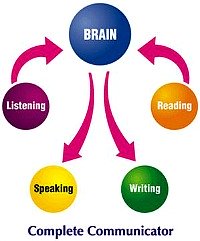 |
Learn English Locally, Apply It Worldwide! Enjoy Regular Practice |
Paragraphs
In the process of writing, you will end up with a number of sentences on the same topic, also called the central idea. This unit of closely related sentences is called a paragraph.
There is no rule as to how long this unit should be, however, it is accepted practice that this should be a subdivision in a longer piece of writing. The length for a paragraph will vary from one form of writing to another, depending on various factors, including the topic or idea being related, the style and rhythm used by the author, the audience for the written piece, the medium or the channel of the communication and last but not least, the purpose of the writing.
Another term related to paragraphs is ‘paragraphing’, which is the practice of dividing a text into paragraphs, to indicate to your readers the stages and the various aspects of your thinking about the topic in hand. To indicate in your text when a new paragraph starts, you would start each paragraph on a separate line altogether, or even leave a single line space between the paragraphs – this is called a paragraph break. Depending on your style, or what is required of you at school, you would indent each paragraph, i.e. you would leave 5 to 10 blank spaces in front of the first sentence of each one.
Imagine a text that goes on and on and on ad infinitum leaving the reader perplexed as to where the piece of writing is going. Paragraphing is an art based on the ‘feel’ and the author’s voice rather than on any prescribed techniques. As a student and novice writer you will need to experiment with organising the text in your written piece in the pre-writing or planning stage of writing. Once you’ve produced the piece, you will have to edit it, when you have a second change at splitting text into chunks that are manageable for your readers. In an exam or a writing test you would gain or lose points based on your skill of paragraphing.
What makes a good paragraph?
From Lois Laase and Joan Clemmons textbook “Helping Students Write . . . the Best Research Reports Ever” (Scholastic, 1998) I suggest you should refer to the following list of what to be careful about when writing your paragraphs.
A paragraph…
- - has one topic;
- - has a topic sentence, otherwise called a ‘hook’;
- - has supporting sentences that give details or facts about the topic;
- - has vivid words;
- - does not have run-on sentences;
- - has sentences that make sense and stick to the topic;
- - has sentences that are in an order that makes sense;
- - has sentences that begin in different ways;
- - is made up of sentences that flow;
- - is mechanically correct in terms of spelling, punctuation, capitalization and indentation.
There is much more to say in relation to writing paragraphs, but I consider this is enough for our present lesson and we shall continue this topic another time. Thank you for your interest.
English Corner Weekly E-zine
Packed with knowledge, published on Tuesdays.
Get yours here!
Our Archives:
Our lessons in the names and sounds of letters, short & long vowel sounds, CVCs, CCVCs, CVCCs, sight words, vowel and consonant contrasts, etc.
Our lessons will help increase your vocabulary, word recognition, find meaning in context, skills for TOEFL tests and other games, for fun.
Here we shall build some lessons to help you improve your writing skills.
Lots of lessons: cause & effect, comparisons, linking signals, relative clauses, presenting information, expressing emotions and grammar games, of course. We had more lessons on: intensifying adverbs and phrasal verbs, expressing various concepts such as addition, exception, restriction and ambiguity. Lately we started some exercises: likes/dislikes, frequency adverbs (twice), verb tenses, etc.
Learn how to build a website, by using the SBI! system - start from the basics, developing a site concept and a niche, supply and demand, learn about profitability and monetization, payment processing, register domain, website structure and content as a pyramid. Also learn about the tools I'm using to build this website. We also covered how to build traffic, working with search engines, building a good system of inbound links, using social marketing and blogs with the SBI system, how to use Socialize It and Form Build It, how to publish an e-zine and how to build a social network in your niche.
We looked at a few games by now: Countable & uncountable nouns, Free Rice, Name That Thing, Spell It, Spelloween, the Phrasal Verbs Game, Preposition Desert, The Sentence Game, Word Confusion, Word Wangling, Buzzing Bees, and The Verb Viper Game.
Be prepared to play and learn more pretty soon.
